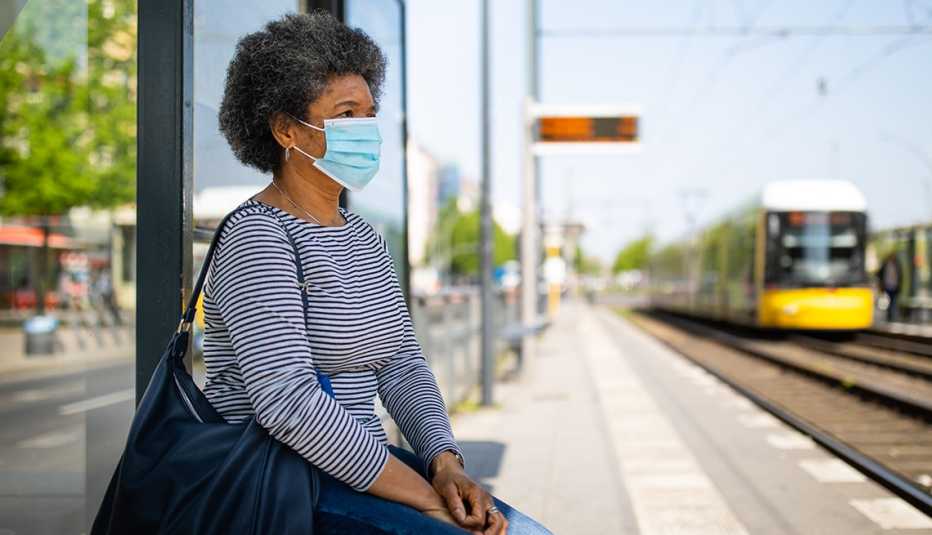Staying Fit


The coronavirus pandemic is a public health emergency and an economic crisis, unprecedented in the disruption of daily life. That makes it something else, too, says Jeffrey Cole, a research professor at the University of Southern California: “Without preparation or permission, we're participating in the greatest social science experiment of all time."
The effects of lockdowns, layoffs and massive public measures to contain COVID-19 “will last long after any threat from the virus is gone,” contends Cole, who directs the Center for the Digital Future at USC's Annenberg School of Communications. “In the future, we'll talk about ‘BC,’ before corona, and after."


AARP Membership— $12 for your first year when you sign up for Automatic Renewal
Get instant access to members-only products and hundreds of discounts, a free second membership, and a subscription to AARP the Magazine.
In collaboration with the Interactive Advertising Bureau, a membership group of media, marketing and tech companies, the center last month launched the Coronavirus Disruption Project, surveying a representative sample of 1,000 Americans about how they are living and coping with the rapid changes wrought by the pandemic.
The results suggest that many of the ways we're adapting to life with the coronavirus — some digital, some physical — will reverberate long after a vaccine or treatment returns life to “normal.” Here are 10 areas where the outbreak is likely to have permanent effects on our personal, professional and cultural lives, drawn from the survey findings and experts’ analyses.
Working from home
The outbreak abruptly introduced tens of millions of workers to telecommuting, and data from the Coronavirus Disruption Project suggests a lot of them like it. Forty-two percent of survey participants said the experience has made them want to work from home more. More than 60 percent of those who are teleworking said they are enjoying the relaxed attire and grooming standards, greater flexibility and lack of a commute, and 78 percent said they are as effective or more so working from home.
"I think there will be some upside” to this disruption that workers will want to preserve, says Debra Dinnocenzo, the president of VirtualWorks, a consulting firm that advises companies on transitioning to telework. “People, families, are going to be spending more time together,” she says. “I think people will be more adamant that they want more time to work at home and not go back to all the crazy commuting they were doing before."
For many, that will sit well with their bosses. Nearly three-quarters of corporate finance officials surveyed in late March by Gartner, a business research and consulting firm, said their companies plan to move at least 5 percent of on-site workers to permanent remote status as part of their post-COVID cost-cutting efforts.
Seeing your doctor
A survey last year by the University of Michigan's National Poll on Healthy Aging (which is cosponsored by AARP) found that only 4 percent of people over 50 had seen a doctor virtually in the previous year. More than half did not know whether their doctor even offered video visits. Patients and practitioners alike were interested in telemedicine, says Preeti Malani, an infectious disease specialist at the university and the poll's director, but in no great rush.
That has changed at “the speed of light,” she says. Doctors and patients who previously might have considered telehealth only in limited circumstances, such as an illness while traveling or a routine post-op chat, are now seeing that a wider range of services can be provided virtually. Along with cutting out hassles like parking and waiting-room time, video visits make it easier for family members to observe and participate, a big boon for caregivers.
"There was a lot of interest in trying to move telehealth and to really think about it carefully and try to encourage it,” Malani says. “It was an aspirational goal, and it felt like it was a year or two away, and it never would have replaced the things it has replaced. But because of necessity, it really moved fast.”
Shopping for groceries
It's no surprise that the online purchase and home delivery of groceries has surged amid coronavirus lockdowns. A March 2020 survey of more than 1,500 consumers by investment firm RBC Capital Markets found that 55 percent had shopped for groceries online, compared with 36 percent in a similar poll in late 2018. The number doing so weekly nearly doubled. And downloads of apps for delivery services like Instacart, Walmart Grocery and Peapod doubled, tripled, even quadrupled in just a month.

































































More on Health
A Step-by-Step Guide to Using Telemedicine
Here's how to get ready for your first virtual visit with a doctor15 Work From Home Jobs That Are Hiring Now
The number of remote opportunities continues to increase